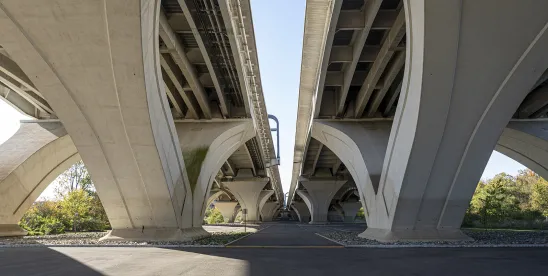The Beltway Buzz is a weekly update summarizing labor and employment news from inside the Beltway and clarifying how what’s happening in Washington, D.C., could impact your business.
CRA “Lookback” Deadline: August 1, 2024? The Buzz recently discussed the importance of the Congressional Review Act (CRA) to the administration’s regulatory agenda and how the CRA’s “lookback” provision allows a new Congress to review and rescind regulations finalized within sixty days of the previous Congress’s adjournment. This week, the Congressional Research Service provided some more clarity as to when that sixty-day marker might fall, though it was quick to point out that “[i]t is not possible to know with certainty what date the 2024 lookback period will begin until the end of the 118th Congress.” CRS wrote:
CRS unofficially estimates that Biden Administration rules submitted to the House or Senate on or after August 1, 2024, until the end of the second session of the 118th Congress are likely to be subject to the CRA lookback provisions and will qualify for additional periods of CRA review in the first few months of the first session of the 119th Congress (2025).
This means that regulations finalized after August 1, 2024, will likely be subject to the CRA’s sixty-day lookback provision in the next Congress. This also means that final rules, such as the U.S. Department of Labor’s (DOL) independent contractor, overtime, and walkaround regulations, will likely be inoculated from a CRA challenge in 2025—though they are all currently being challenged in federal court and could, of course, be reviewed by a new administration using traditional rulemaking processes.
2024 Spring Regulatory Agenda Released. On the afternoon of July 5, 2024, when absolutely nobody was paying attention, the administration released its Spring 2024 Unified Agenda of Regulatory and Deregulatory Actions. The semiannual agendas, which are customarily released in the fall and spring of each year, set forth the administration’s planned regulatory activity for the next sixth months. This most recent agenda is of particular significance because it is a presidential election year and because it might be the last agenda issued by the Biden administration. Some administrative regulatory priorities have already been finalized, such as the Wage and Hour Division’s overtime and independent contractor rules, and the Occupational Safety and Health Administration’s (OSHA) walkaround regulation. Some others—such as OSHA’s proposed heat standard—are just getting started and represent second-term goals. Here is what some of our favorite agencies have planned, according to the agenda:
Workplace Safety (OSHA)
- Powered Industrial Trucks. This rule is scheduled to be finalized in August 2024.
- Personal Protective Equipment in Construction. The final rule is slated for September 2024.
- Infectious Diseases. A proposal to “protect employees from exposure to pathogens that can cause significant infectious disease” has been pushed back to November 2024.
- Workplace Violence in Health Care and Social Assistance. This proposed rule is scheduled to be issued in December 2024.
- Tree Care Standard. A proposed rule “that would best address [tree care] industry safety and health concerns” is scheduled for December 2024.
- Lock Out/Tag Out. Changes to the lock out/tag out standard, in light of new technology, are projected for December 2024.
Office of Federal Contract Compliance Programs (OFCCP). OFCCP’s proposal, “Modernizing Affirmative Action and Nondiscrimination Obligations for Federal Contractors and Subcontractors,” was most recently scheduled to appear in September of this year. Under this latest agenda, the proposal is projected all the way to May 2025.
Office of Labor-Management Standards (OLMS). In August 2024, OLMS is scheduled to issue a notice of proposed rulemaking (NPRM) relating to a new reporting method called “split income reporting.” According to OLMS, “Under split-income reporting, the employer would be required to report, for example, its supervisors’ income on a split basis, that is, the pro rata share of the supervisor’s wages that were spent undertaking the reportable activity.”
Employment and Training Administration (ETA). The agenda does not list any follow-up activity on its request for information on updating Schedule A of the permanent labor certification process.
National Labor Relations Board. In September 2024, the Board is scheduled to finalize its so-called “election protection” rule.
U.S. Equal Employment Opportunity Commission (EEOC). On multiple occasions, the Buzz predicted that the EEOC would seek to revise its short-lived effort to collect employee wage data from employers. In this agenda, the EEOC indicates that in January 2025, it will issue a proposed rulemaking “regarding the EEOC’s authority to collect pay data or related information as reasonable, necessary, or appropriate for the enforcement of Title VII of the Civil Rights Act of 1964 and the Equal Pay Act of 1963.”
U.S. Citizenship and Immigration Services
- H-1B Modernization. The first part of this bifurcated rulemaking was finalized on February 2, 2024. Remaining elements of the proposed rule—though it is unclear whether this includes all or just some of these provisions—are scheduled to be finalized by December 2024.
- EAD Extension. A final rule providing for automatic extension period for certain Employment Authorization and Documentation (EAD) applicants is projected to be issued in December 2024.
- Adjustment of Status to Lawful Permanent Residence. In August 2024, USCIS expects to issue a proposal to amend its regulations governing the adjustment of status to lawful permanent residence in the United States in order “to reduce processing times, improve the quality of inventory data provided to partner agencies, reduce the potential for visa retrogression, and promote the efficient use of immediately available immigrant visas.”
- Modernizing Regulations Governing Nonimmigrant Workers. In January 2025, USCIS plans to release a proposal “updating the employment authorization rules regarding dependent spouses of certain nonimmigrants; increasing flexibilities for certain nonimmigrant workers … and modernizing policies and procedures for Employment Authorization Documents.”
U.S. Department of State
- Personal appearance waiver. In October 2024, the State Department intends to finalize its amendments “regarding the general requirement for immigrant visa applicants to personally appear before a consular officer.”
- The agenda does not list any future plans regarding the State Department’s pilot program for domestic visa renewal for qualified H-1B nonimmigrant visa applicants.
Double Duty. This week in 1921, William Howard Taft was sworn in as chief justice of the Supreme Court of the United States. Having previously served as president of the United States from March 4, 1909, to March 4, 1913, Taft is the only person to serve as both commander in chief and chief justice. The Taft Court’s jurisprudence—generally from 1921 through 1930 when Taft resigned due to poor health—includes many consequential and/or famous decisions, some of which we’ve previously discussed in the Buzz, such as Buck v. Bell, Federal Baseball Club v. National League, Adkins v. Children’s Hospital,Village of Euclid v. Ambler Realty Co., and Pierce v. Society of Sisters (striking down Oregon’s Compulsory Education Act, which required all children to attend public schools). As chief justice, Taft was also instrumental in relocating the Court to its current home. The Court had traditionally met in the Capitol, but Taft was not a fan of comingling two separate branches of government. The Supreme Court building was completed in 1935, five years after Taft’s death.




 />i
/>i

